Types of Coffee
Coffee gets us out of bed in the morning. But trying to understand the Types of Coffee around may make us want to get back in again. Allow us to make it simple.
Choosing a Type of Coffee that is right for you depends on many factors. First, you can select the type of bean you want and from where in the world it originates. You can then choose how it is roasted, what profile it is defined by (i.e. Single Origin, Organic, or Decaffeinated), and what grind it comes in, which in turn enables you to choose what type of machine or device to use when brewing.
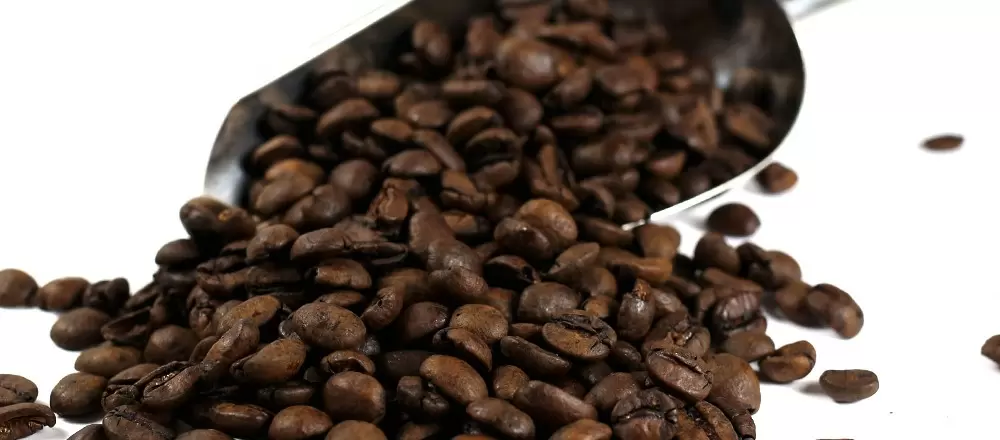
What is Coffee?
Coffee comes from a plant named Coffea, which is of the Rubiaceae family. Cultivated Coffea plants are bushes, but when left unchecked, these bushes can turn into trees. It is a tropical plant that can carry blossoms as well as fruits of differing stages of ripeness at the same time.
Coffee is grown predominantly along the equatorial belt. The average coffee plant takes up to four years before it matures and is ready for harvesting. The ideal climate is one that varies between dry and humid. The flowers need a lot of rain as well as sunshine. And as has been well-documented, the coffee plant does not like frost and over the years, significant amounts of frost cause substantial amounts of damage to the Coffee plant.
The higher grown coffees that mature more slowly give rise, fittingly, to the higher quality Types of Coffee, ones with particularly rich aromas. But what part of the coffee plant is used to make coffee?
The coffee “bean”, as we know it, is the seed of the plant. The cherry-like fruits contain two seeds that face each other on their flat side. These seeds are used in the making of coffee.
With over 80 types of Coffee and Coffee bean, only two are widely used: Arabica Bean and Robusta Bean. But what’s the difference?
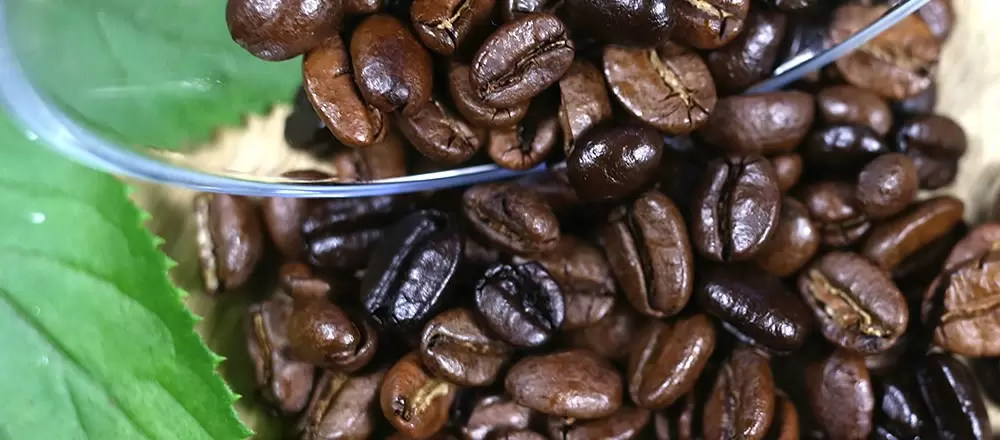
Your morning brew is made from, almost certainly, either Arabica or Robusta beans. Around 75% of the coffee produced in the world is Arabica while 25% is Robusta.
Both coffee beans are different in more ways than one. It is important to note these differences before choosing the type of coffee that is right for you.
Arabica Beans
These beans are the product of the Coffea arabica species of the Coffea plant. It is often an older, more mature type of bean and is considered to be of the best quality.
Brewed arabica beans have characteristically heavy aromas with smoother tastes and less caffeine (1.5% caffeine content) compared to robusta beans. The differences in chemical make up do not stop at caffeine, however, as arabica beans also contain 60% more lipids and almost twice the amount of natural sugars than robusta beans do.
The arabica bean itself, meanwhile, is long in appearance with a more curved central cut. It takes ten months to ripen before being ready for harvest.
On the market, Arabica coffee beans fetch a much higher price than Robusta coffee beans owing to their supposed superior quality. They are in high demand everywhere, but particularly in high-end coffee houses and cafes, as well as right here at The Kent and Sussex Tea and Coffee Company.
But don’t discredit Robusta beans just yet.
Robusta Beans
As statistics establish clearly, Arabica beans are more popular than Robusta beans, which come from the Coffea canephora species of the Coffea plant.
Robusta beans are round in shape with a straighter central cut. The plants on which they grow on are hardier and more resistant to heat and plant-related diseases as well as insects. Coffea canephora plants are also larger than Coffea arabica plants, the former reaching heights of up to six metres compared with the latter’s slightly more modest 4.5 metres.
While quality might not be on the side of the typical robusta bean (at least compared to the arabica bean), caffeine content is. Robusta beans contain 2.7% caffeine content, which is 1.2% more than arabica beans. If you need an extra push in the morning, robusta beans might be for you.
However, most people believe that Robusta beans do not taste as good as Arabica beans, but there are occasions when this is not the case as, after all, it very much depends on personal preference. Robusta beans boast a stronger taste, often with more acidic and bitter notes.
These beans are often used in coffee blending, particularly when making espresso coffees which can include both Robusta and Arabica beans. They are versatile and very accommodating to a variety of added flavours such as chocolate and hazelnut.
Unfortunately, Robusta beans have a bad reputation, one that we here at The Kent and Sussex Tea and Coffee Company are attempting to change.
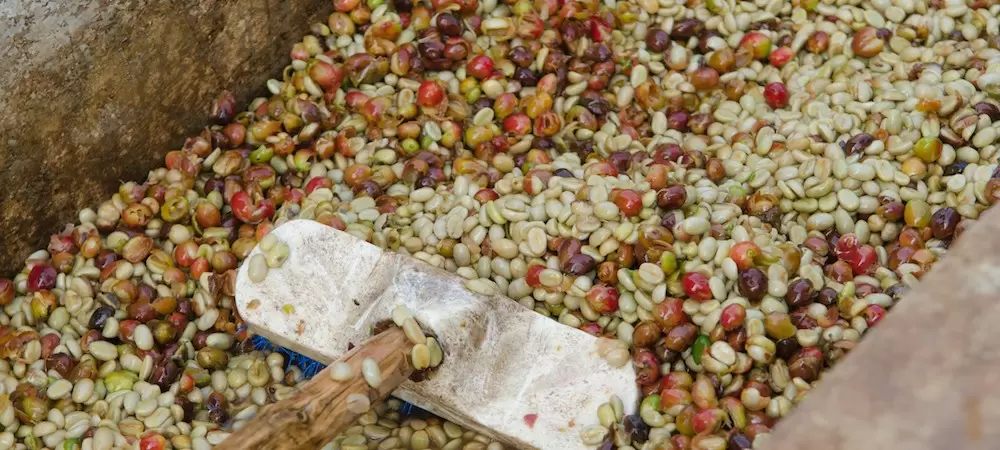
Coffee Processing
There are two main preparation methods applied to the making of coffee: the “washed” processing method and the “unwashed” processing method.
The washed method is considered the best by many, although it requires a lot of skill. The unwashed method, on the other hand, is much easier and requires less skill but often at the cost of quality. There are, of course, exceptions to this rule, however. In fact, there are times, depending on a few factors, when the unwashed method can yield better results.
The unwashed method is the process most commonly used in the Coffee Industry. Here at The Kent and Sussex Tea and Coffee Company, meanwhile, we accommodate both methods to allow you greater choice when selecting your next coffee.
The Washed Method: Also referred to as the wet process, this method sees the Coffee cherry pulped by a specially-designed machine, removing the bean’s outer layer of skin. The “skinned” bean is then allowed to ferment in water for at least 24 hours, sometimes 48 hours, or sometimes longer. After this extended period, however long it may be, the beans are then washed from their mucilage (another layer of the bean) after they have released their aroma.
Some of the world’s highest acclaimed Coffees are prepared using the Washed method, as well as many of the most expensive Coffees. But not every renowned Coffee is costly, as we hope you’ll find out soon enough with The Kent and Sussex Tea and Coffee Company.
The Unwashed Method: Also referred to as the dry process, this method is considered a classic approach to Coffee preparation. It is the oldest process as well as the process most widely used, dating back hundreds of years.
The Unwashed Method, ironically, begins with the Coffee cherries being washed, albeit in the most conventional sense. The beans are then left to dry in the sun. Once the drying process is complete, the green seed is finally removed from the dried, fermented cherry.
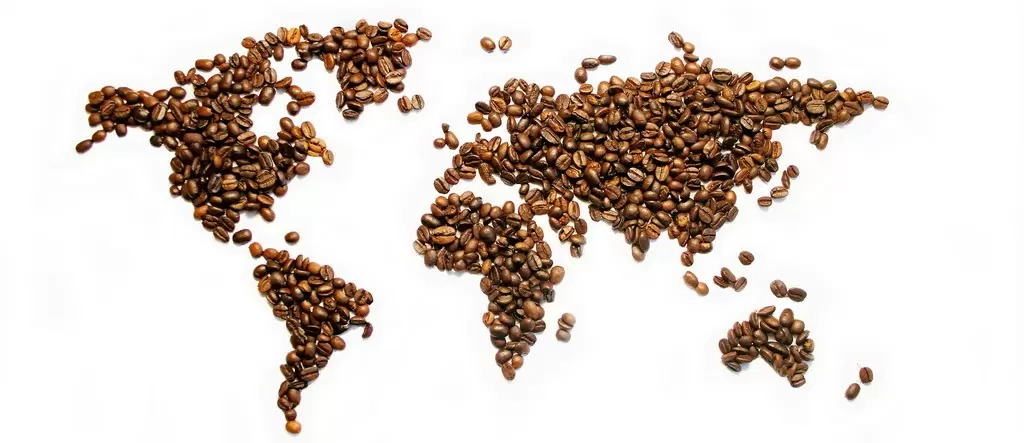
Coffee by Origin
Coffee beans, regardless of the type of beans chosen or the preparation method applied, differ from continent to continent, country to country, region to region and even plantation to plantation. Rarely does Coffee from Ethiopia, for example, taste the same, or even look the same, as Coffee from Mexico, or Jamaica, or Indonesia.
Climatic conditions (i.e. humidity, rainfall and sun exposure) play a crucial role when examining the different types of coffee from a geographic standpoint. This, as well as varying ways of growing, harvesting and processing.

African Coffee
Coffee was first discovered in Africa, specifically Ethiopia, hundreds of years ago. When exactly, no one knows for sure, but according to folklore, goat herders once stumbled upon their animals grazing on the plants. The goats were jumping and running around in ways the herders had never seen before. It soon became apparent it was something to do with the berries they were eating – it was Coffee!
Since then, things have only got more and more interesting for Coffees originating from the African continent, a landmass that spans 30,244,049 square kilometres; in other words, plenty of room to grow quality Coffee!
In fact, African Coffee is considered the best in the world, mostly due to the high elevations and lush soil conditions in which it grows. But this could also be seen as a generalisation, as Africa consists of many great Coffee-growing countries of varying elevations, climates and soils including Kenya, Rwanda and Ethiopia, each one adopting Coffee-producing techniques unique to them.
Since 2003, Africa’s total global Coffee exports have increased by over 300% to date, a much-needed boost following a slight slump in the 1970’s, which saw exports drop by 25%. Before this period, Ethiopia, Uganda, Angola, and the Republic of Côte d’Ivoire (the Ivory Coast) had all been among the top-ten countries regarding Coffee production. Now, however, only Ethiopia and Uganda have retained their positions.
According to 2015 statistics, Ethiopia accounts for 39% of Africa’s Coffee production, followed by Uganda at 23%, the Ivory Coast at 13%, Tanzania at 6%, and Kenya at 5%. Combined, Africa currently accounts for 12% of global Coffee production. But what about the taste?
Again, taste very much depends on the type of coffee selected. For example, Ethiopian Sidamo Coffee is light, smooth, aromatic and fruity, while Ethiopian Yirgacheffe Coffee is nutty and slightly acidic. Kenyan Coffees, meanwhile, are usually grown at elevations between 4,000 and 7,000 feet, often consisting of bold, full-bodied and sweet tastes. Then there is Rwandan Coffee, which boasts butter-like flavours reminiscent of butterscotch and caramel. These, however, are but a few examples of what African Coffees can offer.
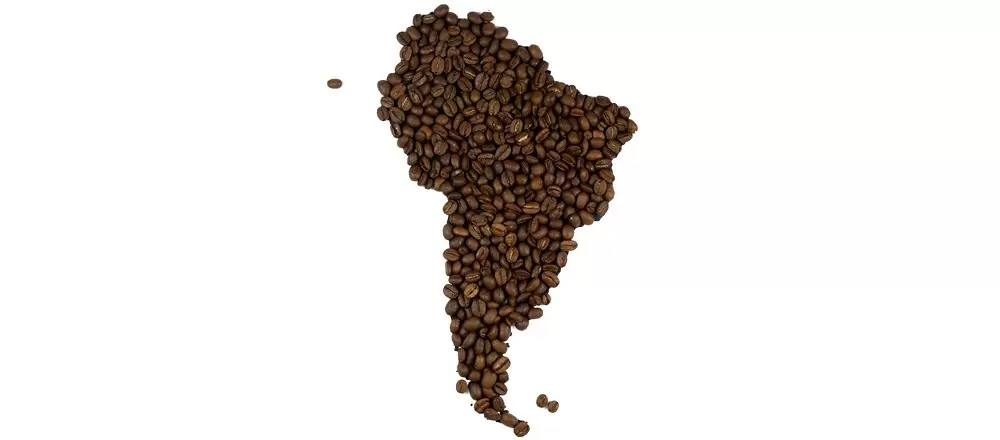
Coffee from South America
When one thinks of Coffee, thoughts often drift to South America. There is a reason for that, as some of the most famous Coffees in the world come from South American countries such as Colombia and Brazil.
Coffee arrived in South America over the course of the late 17th and early 18th Century. First, it travelled from Ethiopia to Yemen, and then on to Indonesia through Dutch traders in 1690. From Indonesia, Coffee travelled to the Caribbean in 1718; in particular, the Dutch colony of Suriname. Years after arriving in the New World, Coffee made it to South America.
By the 1830’s, most of Spain and Portugal’s mainland South American colonies had achieved Independence, and with this came a further expansion of the Coffee industry on the continent. Ultimately, this period saw South America rise from obscurity to become one of the best Coffee-growing locations in the world. And little has changed today.
Coffees from Brazil, as a rule of thumb, are made up predominantly of arabica beans and offer full-bodied flavours with nutty notes. Colombian Coffee is often well-balanced with moderate acidity and sweetness. Peruvian Coffees, on the other hand, are recognised as tart and slightly citrusy in flavour. Of course, this doesn’t apply every time or with every Coffee. Regardless, South American Coffees have garnered a name for themselves. And rightfully so.
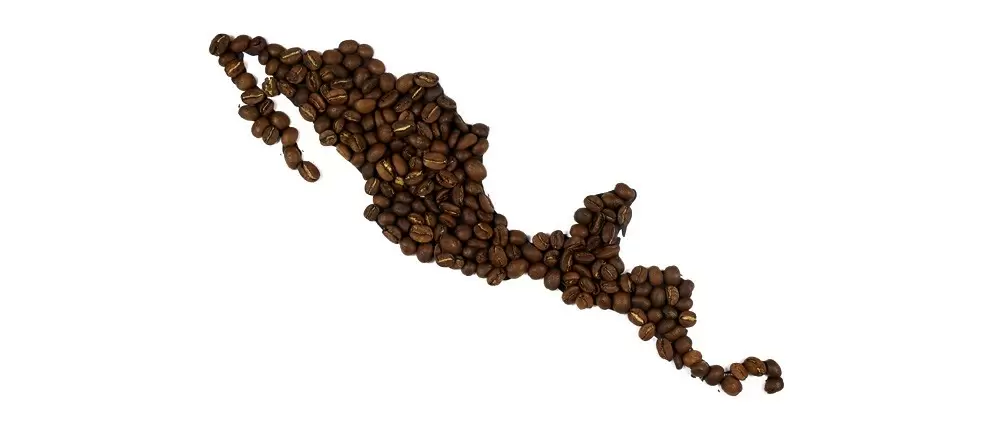
Coffee from Central America
Like much of the world of Coffee, there are stark differences between Coffees from South America and Coffees from Central America, a landmass that makes up the countries of Belize, Costa Rica, El Salvador, Guatemala, Honduras, Nicaragua, Panama and parts of Columbia. Contrary to popular belief, Mexico is a country in North America, although the Coffee Industry has long associated it with Central America.
But why choose a Coffee from Central America instead of better-known Coffee-growing regions such as Africa and South America? It turns out that Central American Coffees have plenty to offer, with each Coffee as unique and tasty as the last.
Central America, in general, produces washed arabica Coffees; however, each country has its own distinct micro-climate, meaning many of these Coffees differ significantly from one another. Guatemalan, Costa Rican and Panamanian Coffees are immensely popular, but one can find exceptional brews in most Central American countries.
Mexican Coffees, for example, are frequently classified as light or medium in body, with many popular brews, notably our Mexican Terruno Nayarita Reserva Coffee, coming from the area surrounding the extinct volcano of Cerro San Juan. The unique soils of the area impart many of the unique characteristics known in Mexican Terruno Nayarita Coffee.
Then, with most El Salvadorian Coffees, flavours are noted as being soft yet complex with low acidity, which is in contrast to Guatemalan Coffee, often described as slightly spicy, slightly smokey and high in acidity. Costa Rican Coffees, meanwhile, which are commonly grown on fertile, well-drained volcanic soil above 3,000 feet, are typically arabica beans with clean, robust acidity.
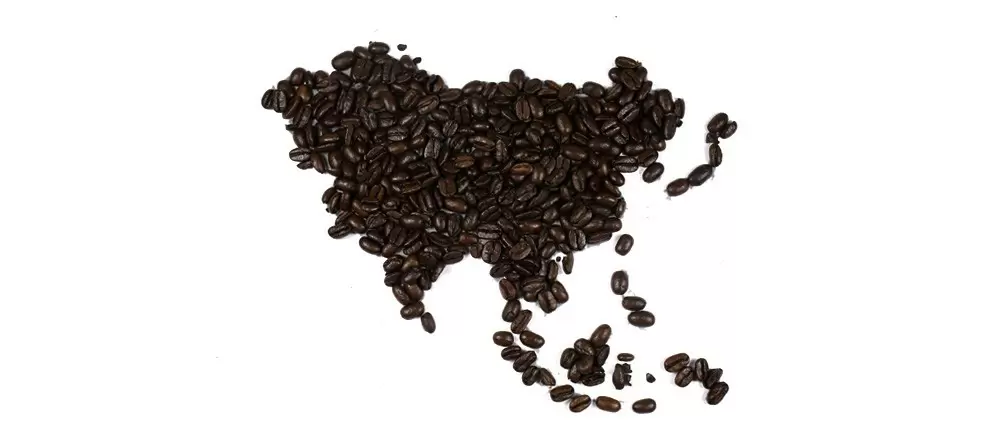
Coffee from Asia
Quality Coffees from Asia are magnificent, but the continent is also home to numerous lower quality Coffees, too. For that reason, it is essential to buy Asian Coffees from trusted sources, such as, of course, The Kent and Sussex Tea and Coffee Company.
Vietnam, in particular, is one of the biggest producers of Coffee in the world. In just 30 years, its market share has jumped from 0.1% to 20%, while in the 1990’s alone, Coffee production grew by 20%-30% every year. Today, a quarter of Coffee drunk in the UK comes from Vietnam, but this is often instant coffee of cheaper quality. For that reason, The Kent and Sussex Tea and Coffee Company, as of present, do not cater to Vietnamese Coffees. We deal only with quality, after all.
But, of course, there are many other countries in Asia, most of which are producing some truly delicious types of coffee. particularly Indonesia. The island of Java is Indonesia’s largest Coffee producer. It is famous for its Arabica Coffee Beans, which are stored for two to three years to allow them to develop a fuller, richer taste.
Other Indonesian Coffee-growing regions include Sulawesi, Flores, East Timor, Bali and Sumatra. When it comes to Javanese Coffee, however, one can expect earthy tastes balanced perfectly between mellow and spicy notes.
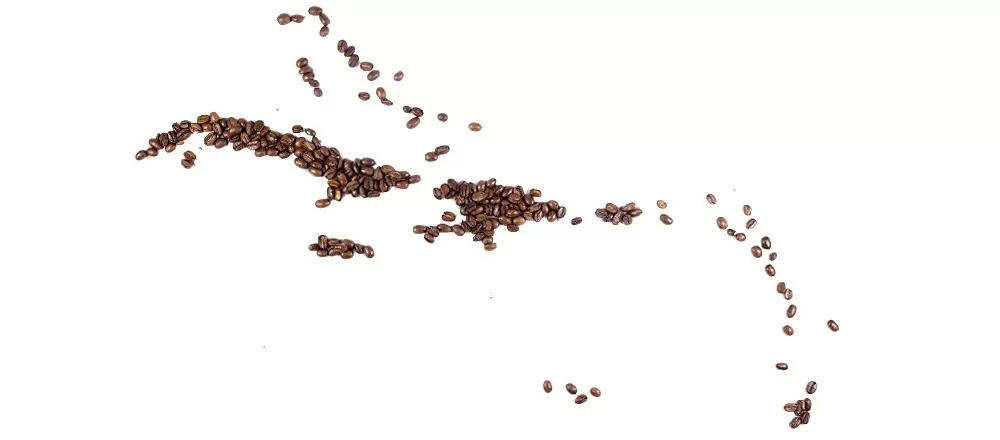
Coffee from Caribbean
Warm weather and volcanic soils combine to create perfect growing conditions for Coffee in the beautiful Caribbean. Many travel there for the sun, but it is the gourmet Coffee that they can take back home with them afterwards.
Consisting of 28 island nations and more than 7,000 individual islands, the Caribbean has plenty of room, plenty of unique micro-climates and, most of all, ample potential to grow Coffees of the highest quality. Take the island of Hispaniola, home to two countries – the Dominican Republic and Haiti. Here, Coffees from Haiti are mellow while Dominican Coffees are notably sweet.
The United States territory of Puerto Rico is also an excellent island for Coffee, although its popularity among the islanders themselves means it seldom leaves the region! Puerto Rican Coffees are smooth, creamy and indulgent, so this comes at little surprise! Then there is Cuba, a country with a controversial past but a bright future in coffee-growing. Cuban Coffees are, generally speaking, recognised for their heavy body and particularly fine, dark roasts.
However, none compare to Coffees from Jamaica, specifically Jamaican Blue Mountain Coffee, one that we are proud to stock here at The Kent and Sussex Tea and Coffee Company. It is one of the rarest, one of the most delicious and, at times, one of the most expensive Coffees in the world. But we accommodate this Coffee at a competitive price, as we believe everyone should try it.
Ideal climatic conditions, high altitudes and attentive Coffee farmers are three of the main contributing factors to Jamaican Blue Mountain Coffee’s unmistakable quality. For a Coffee to be recognised as “Jamaican Blue Mountain”, the beans must be explicitly grown within the Jamaican parishes of Portland, St Andrew, St Mary or St Thomas; altitudes, meanwhile, must be between 3,000 and 5,500 feet.
These combined requirements ensure that Jamaican Blue Mountain Coffee boasts a smooth, polished flavour with mild acidity and subtly bitter undertones.

About Coffee Blends
Differences between Coffees from various continents, countries and regions is a strength, not a weakness. So why not combine these differences to make something even more special? This is the art of Coffee Blending, an art form that is becoming increasingly popular.
You could easily choose a Coffee from Ecuador, from Uganda, from India, or you could pick out a Coffee Blend that has Coffee from all three countries. But why do this?
Imagine eating separates ingredients that could make up a delicious chocolate cake. Imagine also missing out on the heavenly flavour and the texture of the would-be cake, one perhaps that could have been made by skilled and masterful bakers with years of experience blending these ingredients.
Brew up one Coffee from one continent, country or region, and you will probably enjoy it; brew up another from a different continent, country or region, and you will likely enjoy it, also; blend both Coffees and you combine their best qualities into one cup.
With Coffee Blending, the possibilities are endless. One Ethiopian Coffee might be well-suited to a Colombian Coffee. Another El Salvadorian Coffee might taste twice as good when added to a Dominican Coffee, or an Indian Coffee, or a Balinese Coffee.
Blending Coffee almost always means consistency year after year after year. It ensures that your favourite blend will smell and taste the same whenever you purchase it, whereas the taste of a single origin Coffee can change dramatically from one year to the next. These Coffees can also be blended to give distinct flavours and aromas that are seldom found when choosing Single Origin Coffee.
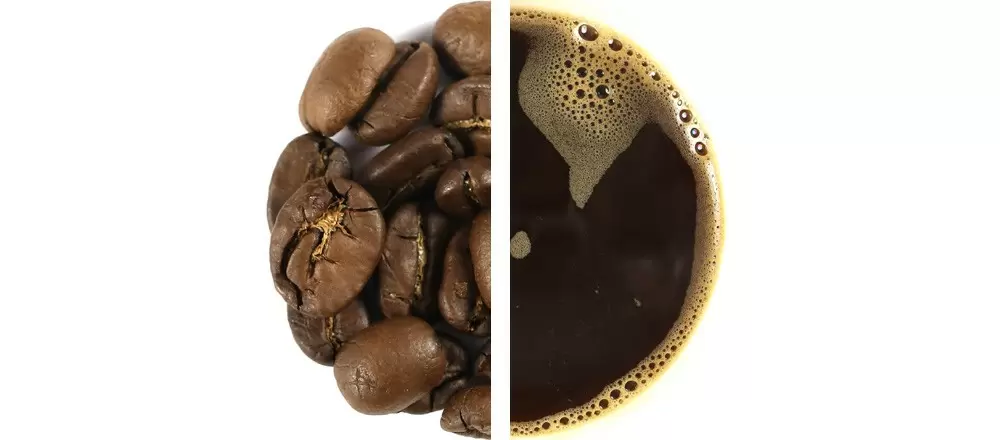
Coffee by Profile
You’ve chosen which bean (or chosen both beans in one blend!); you have determined its preparation method; you have decided on the origin(s) of your Coffee; you have selected the roast – now what? It’s now time to choose the profile and/or the style! But what does this mean?
You already know, at least on a fundamental level, what Single Origin Coffee is, as well as a Coffee Blend; but there is also the choice of a Decaffeinated Coffee, an Organic Coffee, a Flavoured Coffee, or an Espresso Coffee. What best suits your personal tastes? There is an argument to be made that this is where the fun begins.
Single Origin Coffee: Specifically, the term “Single Origin” refers to a Coffee that has come from only one country, region, farm, estate, or sometimes, paddock. In other words, a Single Origin Coffee is exclusive to a single origin, as the name suggests.
Deciding on a Single Origin Coffee ensures traceability. It means you are, for the most, able to know where your Coffee has come from and the journey it has taken from plant to cup. As well as getting your morning brew, you are getting every last bit of information attached to it.
Arguably, a Single Origin Coffee is where it’s more important to know the best course of action for roasting. Read each Single Origin Coffee description carefully, compare it with our roasting guide, and make a decision best-suited to you and the beans themselves.
Espresso Coffee
Contrary to popular belief, an Espresso Coffee is not a different, unique kind of Coffee Bean. Espresso Coffees often use both Arabica and Robusta beans, but specific bean characteristics (i.e. how they were grown and prepared) lend themselves to creating the perfect espresso. In fact, “espresso” refers more to the process used for its making, rather than it being a type of Coffee per se.
Espressos are served typically in “shot”-form, which is made by forcing pressurised hot water through finely ground, dark-roasted Coffee beans. There is also a higher caffeine concentration per ounce in Espresso Coffees compared to regular coffees, making them an excellent choice for getting out of bed in the morning.
Coffee Blends
Put simply, a Coffee Blend can be almost any Coffee from nearly anywhere, blended with another Coffee, or multiple Coffees. It combines some of the most excellent qualities of some of the tastiest Coffees in the world, all in one cup.
Single Origins are becoming increasingly popular today; however, they come at the cost of consistency. For example, one year’s Coffee crop from Sumatra might be different to the next year’s crop, mostly due to ever-changing climatic conditions. But with a Coffee Blend, one usually knows what they are getting every time as the desired Coffee Blend is blended to strict specifications, the taste almost always remaining the same.
Chocolate Covered Coffee
Brewing up a cup of Coffee is just one way to enjoy the beans. What if you could enjoy the same beans as indulgent sweets rather than in a morning brew? That is what you get with Chocolate Covered Coffee Beans.
As the name suggests, Chocolate Covered Coffee Beans are the finest quality Coffee beans wrapped in a layer of chocolate. They make a scrumptious and moreish treat, ones that are enjoyed “on the go”, wherever you are. Because, unlike brewed coffee, you can carry Chocolate Covered Coffee Beans with you at all times, giving you a pick-me-up when you need it most.
Decaffeinated Coffee
Caffeine is found naturally in around 60 plants, including nuts from the Kola Tree (often used in soft drink products), cocoa beans from the Theobroma cacao tree (used in the making of chocolate), leaves from the Camellia sinensis plant, better known as the Tea plant and, of course, beans from the Coffea plant; in other words – Coffee.
But some people are sensitive to caffeine intake, while others may wish to lower their caffeine consumption for health reasons. For this, we have Decaffeinated Coffee, which is a type of Coffee that has, quite literally, had the vast majority of the caffeine removed (on average 95-98%). No Coffee can have its caffeine content removed entirely, but most Decaf Coffees have no more than 5-10 milligrams of caffeine per cup.
Ethical Coffee
Most of us take comfort in knowing that the products we use in day-to-day life have come to us at the benefit of others; in particular, those who are trying to make an honest living, perhaps who live in a developing country, and are seeking merely to feed their families. We all have that power when choosing a Coffee deemed “ethical”.
Rainforest Alliance is one such organisation leading the way with Ethical Coffees. Farms and estates that are certified by the Rainforest Alliance must adhere to a multitude of sustainable principles including the fair treatment of all workers, the minimisation of soil erosion and the conservation of surrounding landmass, which in particular refers to maintaining wildlife and water resources.
Ultimately, with an Ethical Coffee, all possible and necessary precautions have been taken to ensure ethical practices are in place from plant to cup.
Organic Coffee
Similar to Ethical Coffees, Organic Coffees are a choice of higher morality. But with Organic Coffees, in particular, extra care is taken to ensure the sustainability of the environment, while also ensuring that all Organic Coffees are at least 95% free of synthetic substances such as most pesticides, herbicides and fertilisers.
And like Organic Teas, all Organic Coffees certified “organic” must adhere to strict EU regulation, which includes each container of Coffee being checked and sampled, and if a particular Coffee fails inspection, the container is resealed and returned to the country of origin. No exceptions.
Organic Coffees are, ultimately, the environmentally-friendly option. With-ever growing concerns regarding the state of our planet, it is a great hope that the Organic Coffee Industry will continue to grow and develop. Businesses such as The Kent and Sussex Tea and Coffee Company are going above and beyond to make sure this happens.
Flavoured Coffee Beans
There are an estimated 800 different compounds found in Coffee. These compounds contribute to the oils, minerals, salts, organic acids, sugars and, perhaps most importantly, the flavours of Coffee.
But Coffee is an accommodating beverage. It suits the addition of many other flavours, which can take place during the processing of beans. Some of the most popular Flavoured Coffees include Hazelnut Flavoured Coffee, Chocolate Flavoured Coffee, Vanilla Flavoured Coffee, Brandy Flavoured Coffee and Amaretto Flavoured Coffee. And this is to name but a few!
Traditionalists often consider Flavoured Coffee inadequate in taste, sometimes going as far as to dub them “false Coffees”, which is why here at The Kent and Sussex Tea and Coffee Company, we do not use “fake” flavour syrups. Instead, we infuse natural flavouring to the beans, thus creating a more natural-tasting cup of Coffee.
Types of Coffee by Grind
Excluding our Chocolate Covered Coffee Beans, all of our “styles” of Coffee are ground (or not!) to the specification of the individual.
The grinding of the Coffee is the first step toward influencing how the final brew tastes. It is arguably the most defining moment in the journey of the Coffee Bean from plant to cup. Regardless of your Coffee brewing choice, the fundamental goal of grinding Coffee is the same: break down the roasted Coffee bean to expose its interior, allowing the right amount of oils and flavours to be extracted.
You can’t brew Coffee from Coffee Beans that haven’t been ground (or, at least, not well), so selecting a specific grind for your Coffee is very important. Here at The Kent and Sussex Tea and Coffee Company, we can grind Coffee to three specifications: “Ground Espresso Fine”, “Ground Medium Fine”, and “Ground Cafetiere Coarse”. If you would rather grind the Coffee yourself, from home or your place of work, then one can select the “Coffee Beans” option. But what does each kind of grind offer?
Ground Espresso Fine: As a rule of thumb, the finer the grind, the stronger the Coffee. And that is why many choose to grind their Coffee to Ground Espresso Fine specifications.
This grinding method is particularly fine and is best-suited to specially-designed Espresso Machines. The only Coffee finer than those ground to these specifications are our Greek and Turkish Coffees.
Ground Medium Fine: Best-suited to filter/drop Coffee machines, Ground Medium-Fine Coffees are often described as slightly gritty in texture, with the consistency of coarse sand (but not as coarse as Ground Cafetiere Coarse… of course!).
Ground Medium-Fine Coffees are some of the most popular Coffees, period, owing to their versatility when brewed.
Ground Cafetiere Coarse: As the name would suggest, Coffees ground to our Ground Cafetiere Coarse specifications are, most commonly, used in Cafetieres!
For a cafetiere, one needs a Ground Cafetiere Coarse grind because the Coffee takes longer to brew. It avoids over-extraction, which would make the Coffee overly-acidic and unpleasant. By choosing a Ground Cafetiere Coarse grind, you are avoiding the possibility of ruining your Cafetiere Coffee.

Different Ways to Drink Coffee
Visiting a Cafe or Coffeehouse, you have likely come across numerous beverages you’ve never heard of, but always been fascinated to try. There are literally dozens of choices, each as delicious as the last. Because, after all, Coffee is what you make of it – literally.
Black Coffee: Pure, simple, Coffee with no fancy additions – that is the very definition of Black Coffee at its finest.
Coffee with Milk and/or Sugar: Following the same guidelines as Black Coffee, except with milk and sugar added after brewing.
Cappuccino: An Espresso Coffee made with hot milk and steamed milk foam.
Latte: Like a Cappuccino, a Latte is made from an Espresso Coffee with steamed milk, except with the ratio being between 1:3 to 1:5 and with a little foam.
Americano: This is another Espresso drink, but where hot water is added, creating a Coffee similar in strength but different in taste to regular filter Coffee.
Espresso: A Coffee made with only a small amount of water; one defined less as a type of Coffee per se, and more as a method of making Coffee (see above information). Nevertheless, ordering an “Espresso” at a Cafe typically means having a “shot” of strong-tasting, highly-caffeinated Coffee.
Flat White: Popular in Australia and New Zealand, Flat Whites are Espresso Coffees similar to Lattes, only with textured milk.
Macchiato: Again using an Espresso base, a Macchiato consists of a small amount of foamed milk, similar to a cappuccino, only stronger.
Cold Brew Coffee: Unsurprisingly, to make a Cold Brew Coffee, one must use cold water, although Cold Brew Coffees should be left to brew for more extended periods.
Iced Coffee: Not to be confused with Cold Brew Coffees, Iced Coffees are prepared with hot water and then left to cool before serving.
Buy Different Types of Coffee Online
Still uncertain about anything? Contact us! We are here to help. The Kent and Sussex Tea and Coffee Company have worked with Coffee, in particular, for decades, our years of expertise ensure quality with every brew we stock.
So whether you’re looking for a Single Origin Coffee, a Water-processed Coffee, a finely-ground Coffee, a Medium-Dark-Roasted Coffee or a Filter Coffee, or maybe something else, we can accommodate your Coffee (and Tea!) needs.
And now, the time has come to explore our full range, taking the knowledge you have unearthed here and applying it to your search for the best brew. If that doesn’t get you out of bed in the morning, then who knows what will!

 Loose Leaf Tea
Loose Leaf Tea Pyramids
Pyramids Tea Bags
Tea Bags Africa
Africa Assam
Assam Ceylon
Ceylon Chinese
Chinese Darjeeling
Darjeeling European
European Indian
Indian Japan
Japan Nepal
Nepal South East Asia
South East Asia Ayurveda Tea
Ayurveda Tea Black Tea
Black Tea Chai Tea
Chai Tea Flowering Tea
Flowering Tea Fruit Tisanes
Fruit Tisanes Green Tea
Green Tea Herbal Tea
Herbal Tea Matcha Tea
Matcha Tea Oolong Tea
Oolong Tea Organic Tea
Organic Tea Pu erh Tea
Pu erh Tea Rooibos Tea
Rooibos Tea White Tea
White Tea Asian Coffee
Asian Coffee Caribbean Coffee
Caribbean Coffee Central American Coffee
Central American Coffee South American Coffee
South American Coffee Coffee Blends
Coffee Blends Decaffeinated Coffee
Decaffeinated Coffee Espresso Coffee
Espresso Coffee Ethically Sourced Coffee
Ethically Sourced Coffee Flavoured Coffee
Flavoured Coffee Organic Coffee
Organic Coffee Single Origin Coffee
Single Origin Coffee Chocolate 1
Chocolate 1 Chocolate 2
Chocolate 2 Chocolate 3
Chocolate 3 Chocolate 4
Chocolate 4 Chocolate 5
Chocolate 5 Chocolate 6
Chocolate 6 Chocolate 7
Chocolate 7 Chocolate 8
Chocolate 8 Chocolate 9
Chocolate 9 Loose Tea Filters
Loose Tea Filters Tea Accessories
Tea Accessories Tea Bricks
Tea Bricks Tea Caddies
Tea Caddies Tea Caddy Spoons
Tea Caddy Spoons Tea Gift Ideas
Tea Gift Ideas Tea Infusers
Tea Infusers Tea Strainers
Tea Strainers